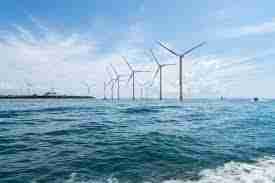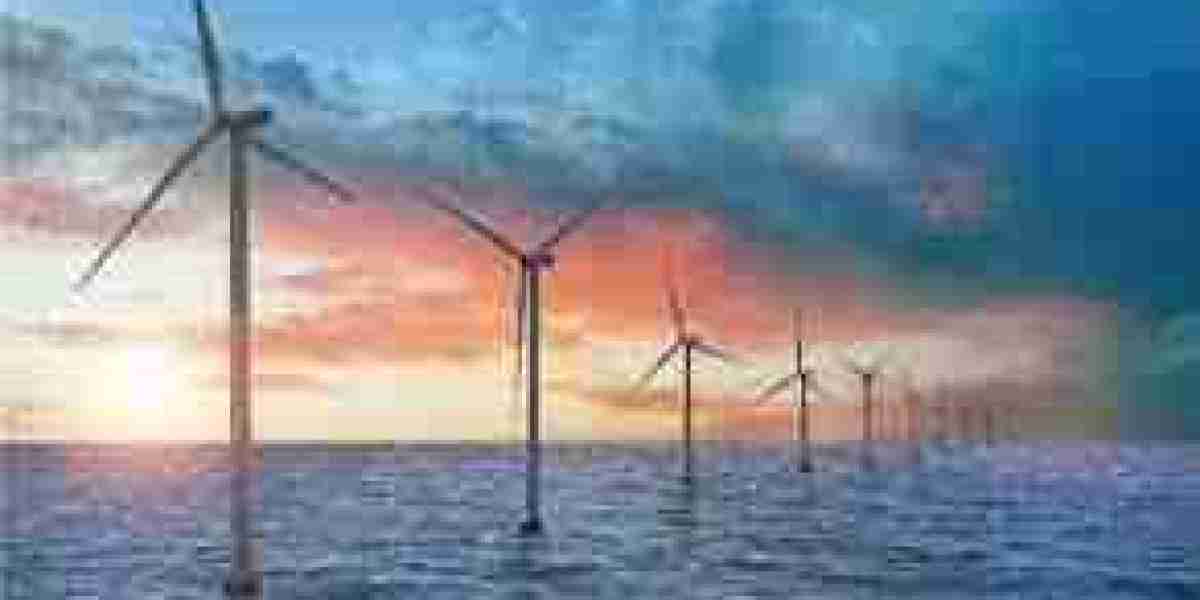The offshore wind energy market is undergoing significant development as it emerges as a crucial pillar in the global transition toward renewable energy. From early pilot projects to multi-gigawatt wind farms, the market has evolved into a robust and competitive segment attracting government attention, private investments, and technological innovation. This article explores the key areas of offshore wind development, including global progress, technological milestones, regional advancements, and the strategies propelling this market toward long-term sustainability and growth.

1. Historical Context and Market Evolution
Offshore wind energy first gained traction in the early 1990s with modest installations along the coasts of Europe. Over the years, its development has been fueled by rising energy demand, climate concerns, and advancements in turbine technology. The last decade has been particularly transformative, with large-scale wind farms coming online in the North Sea, the Chinese coastline, and the U.S. Atlantic waters.
What began as a European-led initiative has now become a global movement, with dozens of countries launching offshore wind development plans to decarbonize their power systems and diversify their energy portfolios.
2. Technological Development: Larger, Smarter, and More Efficient
Technology lies at the heart of offshore wind market development. In just a few years, turbine sizes have grown dramatically—from 3–5 MW models to units exceeding 15 MW, with some reaching 20 MW prototypes. These next-generation turbines enable fewer installations per project while generating more power, reducing costs and environmental impacts.
Key technological developments include:
Floating wind platforms: These allow deployment in deep waters beyond the reach of fixed-bottom foundations, significantly expanding geographic potential.
Digitalization and AI: Predictive maintenance, real-time monitoring, and advanced control systems improve efficiency and reduce operational costs.
Advanced cabling and substations: New transmission technologies such as HVDC systems support longer distances and intercontinental power flows.
These innovations are not only enhancing project performance but also making offshore wind more viable in previously unsuitable locations.
3. Policy Frameworks and Government Initiatives
Governments around the world are recognizing offshore wind as a strategic asset. Supportive policy frameworks are central to market development, providing stability and visibility for investors and developers.
Major initiatives include:
European Union Green Deal: Aims for 300 GW of offshore wind capacity by 2050, with interim goals of 60 GW by 2030.
U.S. Federal Support: The Biden administration’s commitment to 30 GW of offshore wind by 2030 has triggered investment in port infrastructure and lease auctions.
China’s National Energy Plan: Includes significant offshore wind targets to meet its carbon neutrality goal by 2060.
India’s Offshore Wind Policy: Targets 30 GW of capacity by 2030, with the first leasing rounds and infrastructure planning underway.
Policy development is also expanding to include environmental regulations, grid planning, local content requirements, and de-risking mechanisms like power purchase agreements and green bonds.
4. Regional Development and Market Leaders
Offshore wind development varies significantly by region, shaped by geography, political will, and infrastructure readiness.
Europe remains the most advanced market, with the U.K., Germany, and the Netherlands leading capacity additions. The North Sea continues to serve as a hub for innovation and cross-border projects.
Asia-Pacific is witnessing rapid expansion, particularly in China, which has become the largest offshore wind market by annual installations. Japan, South Korea, and Taiwan are also ramping up floating wind initiatives.
North America, especially the United States, is emerging as a significant player. Projects like Vineyard Wind and Empire Wind are setting the foundation for long-term industry growth along the East Coast.
Emerging markets in Latin America (Brazil, Chile), Africa (South Africa, Morocco), and Southeast Asia (Vietnam, the Philippines) are conducting feasibility studies and introducing national roadmaps to initiate offshore wind development.
5. Investment, Finance, and Supply Chain Expansion
With global investment in offshore wind projected to exceed $1 trillion by 2040, financial development is a critical aspect of the market. Joint ventures, public-private partnerships, and ESG-linked financing are driving growth.
Green bonds and infrastructure funds are enabling large-scale capital mobilization.
Localization strategies are encouraging domestic supply chain development for components, vessels, and labor.
Port upgrades and installation vessel construction are key infrastructure developments supporting project execution.
A major focus is now on de-risking supply chain bottlenecks, securing raw materials, and expanding skilled labor capacity to support the anticipated surge in project activity.
6. Challenges in Market Development
Despite impressive progress, several challenges still hinder offshore wind development:
Permitting delays and complex regulatory frameworks can extend project timelines.
High capital requirements pose entry barriers for smaller developers and emerging markets.
Grid connectivity and infrastructure limitations can constrain integration of generated power.
Environmental concerns must be carefully managed, including impacts on marine ecosystems and coastal communities.
Addressing these issues requires coordinated planning, regional cooperation, and the integration of environmental and social governance into project design and delivery.
Conclusion
The development of the offshore wind energy market is one of the most exciting and impactful transformations within the global energy sector. With advancements in technology, strong political backing, expanding regional participation, and increasing investment momentum, offshore wind is positioned to become a cornerstone of future energy systems. Continued focus on innovation, streamlined regulations, and strategic partnerships will be essential to unlocking the full potential of offshore wind and ensuring its long-term success on a global scale.




